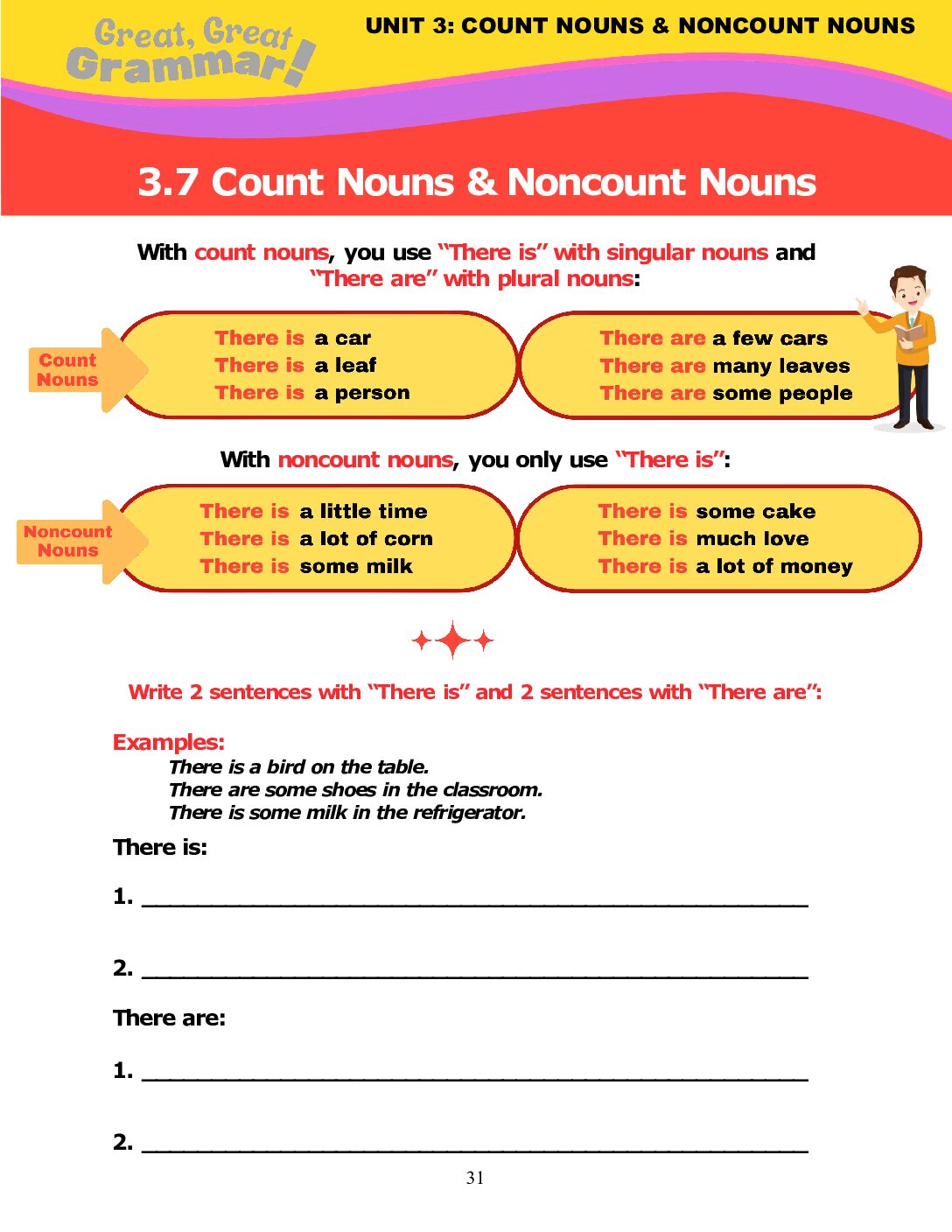This ESL grammar lesson teaches students to use “There are” and “There is” with count/noncount nouns, followed by a short review worksheet in which students practice writing sentences with “there is” and “there are.”
Understanding the difference between count and noncount nouns is a fundamental part of English grammar. Using “some” correctly with these nouns helps you express quantities in a more natural and fluent manner. This guide will explain how to use “some” with count and noncount nouns, provide examples, and offer practice exercises to reinforce your learning.
ESL Grammar: Using “Some” with Count Nouns
Count nouns refer to items that can be counted individually, such as “apples,” “books,” and “cars.” “Some” is used with plural count nouns to indicate an indefinite quantity. Here are some examples:
- I have some books on my shelf.
- She bought some apples at the market.
- There are some cars parked outside.
ESL Grammar: Using “Some” with Noncount Nouns
Noncount nouns refer to substances or concepts that cannot be counted individually, such as “water,” “money,” and “information.” “Some” is used with noncount nouns to indicate an indefinite quantity. Here are some examples:
- Can I have some water?
- We need some money for the trip.
- She gave me some information about the event.
This beginner-level English grammar lesson on count/noncount nouns with “there is” and “there are” is perfect for both online and in-person classes, offering diverse content to suit any learning environment. Many ESL students have difficulty using “there is” and “there are” to express the existence of things correctly, and this lesson is useful for giving them a mental template that they can use in their English speaking and writing. Explore this and many similar grammar lessons for all levels on our page of ESL grammar lessons.
This lesson is available for free download, and you can download many more English grammar lessons focusing on all different parts of speech (nouns, verbs, adjectives, adverbs and lots more!) in our comprehensive, beginner-level ESL grammar textbook Great, Great Grammar! (Book 1: Parts of Speech).

